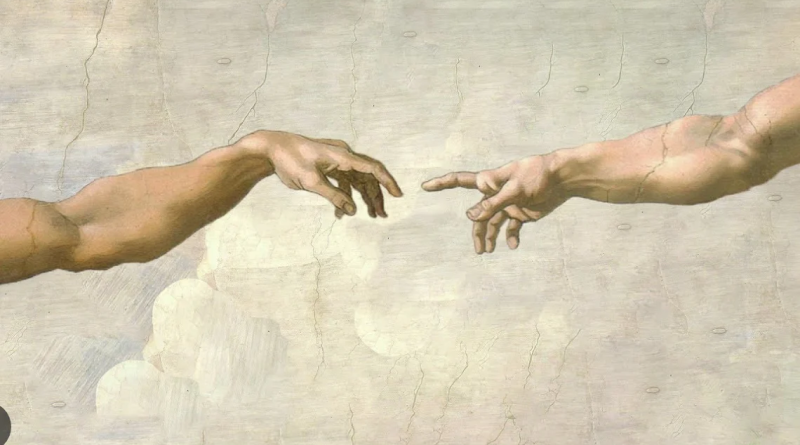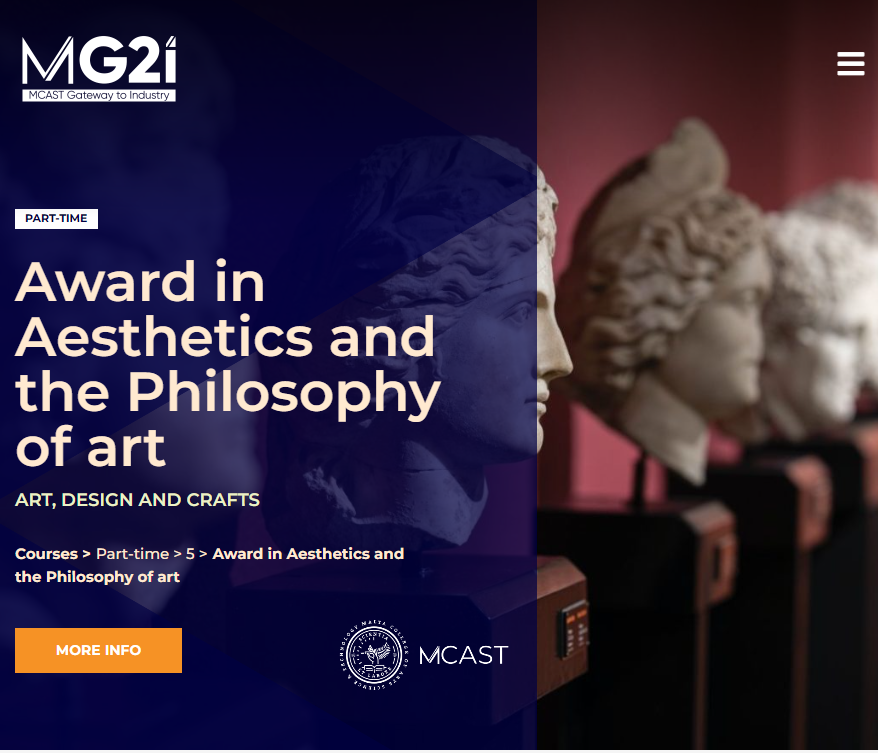From Creation to Re-creation: Art, Audience, and Relevance
Talk given at the Philosophy Summer Festival 2025 organised by the Philosophy Department, University of Malta, 4 June 2025
1. Opening
When we look at a painting, read a novel, listen to a song – we sometimes find ourselves asking, What does this mean?
One way to answer is that meaning lies with the artist – that behind the work is something the artist wanted to say.
This way of thinking treats the artwork as a kind of riddle, and the artist as the authority holding the answer.
But our experience of art doesn’t always match this view.
We’ve all loved a painting, a book, a series on Netflix – having it speak to us – without knowing much about who made it, or why they made it.
Or we’ve come back to a film, a song, a poem – years later – and found we understand something very different now.
This makes us wonder:
Maybe meaning isn’t fixed in the work, waiting to be uncovered. Maybe it doesn’t come only from the artist, but from the encounter between the work and us – in the act of looking, listening, reading.
That’s the idea I want to explore with you: how meaning might live not just in the artist’s mind, but in the response of the audience – and also what that might mean for art today, where some art may have… say… non-human origin.
2. A Traditional View
Let’s start with a familiar idea: that the meaning of a work comes directly from the artist.
In the philosophy of art, this is known as intentionalism – the view that the intention of the artist is the key to understanding a work.
If Van Gogh paints a field with black crows towards the end of his life, intentionalism asks: What was he thinking? What was he trying to say? What does the work reveal about his life, his state of mind, his message?
This approach has value. Artists often do have intentions, and knowing their context can enrich our understanding.
—
But there are also issues.
First: intentionalism assumes that meaning is fixed and finished at the moment of creation – at the origin.
But what happens when we no longer have access to that origin? When the artist’s intentions aren’t recorded, remembered, or known?
Or – more radically – what if the ‘artist’ is a machine with apparently no intention at all?
If meaning depends on knowing the artist’s mind, then these works – however beautiful or moving – seem to have no meaning.
And yet, we often respond to such works.
They still speak to us.
Second: as context changes, so does meaning.
Meaning shifts.
The word terrific once meant horrifying and dreadful and appalling; now people use it to mean literally awesome.
Another example is the word literally. It used to mean: not figuratively – exactly as written or stated. Now people use literally to mean figuratively, for emphasis.
Hence the irony of someone telling you they literally died of embarrassment, when they’re clearly still standing, talking to you.
And as much as we may hate the fact, meaning evolves, changes, shifts.
So what happens when a work’s original context fades?
Does it become a kind of artefact in a dusty museum basement – something we no longer meaningfully live with?
Intentionalism struggles here, because as worlds fade, so does original meaning risk fading.
Yet we’re still moved by – and find meaningful – works whose makers are contextually foreign to us.
3. When the Audience Enters
Now for a bit of background:
Around the mid–twentieth century, the question shifted from What does the artist mean? to What does the audience experience?
This is the core of a family of audience-oriented approaches across the arts.
They share one core idea: that meaning doesn’t come from the artist alone, but is shaped – sometimes decisively – by the encounter between the work and its audience.
And this doesn’t make art weaker – it makes it alive.
Every time someone engages with a work – a book, a painting, a song, a poem – it’s as if the work is reborn.
It doesn’t just survive – it continues to… become.
It gains an afterlife – a life after the artist.
Not one meaning, but many meanings. Not one legacy, but many legacies.
The artist lets go – not of authorship, of course, not as the origin or genesis of the work – but of authority over meaning. And this allows the work to live on. It goes forth and multiplies.
We can think of a work of art not as a finished object, with definite meaning, but as something that takes place – an event.
The artwork creates a space where something can happen – where meaning can begin to take shape but never fully settle.
Instead of seeing the work as a container of meaning, we can see it as a site where meaning becomes possible.
Sense, or meaning, happens when the artwork is seen, heard, experienced, encountered.
Meaning appears briefly in that encounter. Therefore – as Fr Mark said earlier in his talk – it is partial, open, and unfinished.
4. Enter AI
What happens when we apply this approach to, say, generative AI systems?
Can we say these outputs are meaningless?
Yes, if we think meaning depends only on the artist’s intention – and here the artist seems absent.
But that doesn’t quite match how people react.
Granted, a lot of AI output seems absolutely, brain-rottingly brainless. Sometimes it’s just cringe. Sometimes it makes us laugh.
But sometimes it invites reflection.
That suggests we are engaging with it – we’re responding, interpreting it.
And if we take seriously the idea that meaning arises in the encounter – not in the origin’s mind – then perhaps these works can also have meaning.
Which brings us back to where we started:
Maybe what matters isn’t just who or what made the art – but what happens when we meet it.
5. Criticisms of Response Theory
Now, it’s worth pausing to consider a couple of challenges.
First: If meaning depends on the audience, does that mean that anything goes?
Can someone look at a painting and claim it’s about whatever they want – no matter how far-fetched?
And if artists’ intentions don’t matter at all, does that mean they bear no responsibility for what their work does in the world?
This raises real concerns, especially when art touches on politics, ethics, identity, violence.
Can the artist just shrug and say, Well, that’s just your interpretation?
So, audience-response theories raise concerns about, say, accountability.
If meaning is entirely subjective – if it’s just whatever I happen to feel when I encounter a work – then yes, it risks becoming chaotic or incoherent. Anything could mean anything. And if anything can mean anything, does it really mean anything at all?
But here’s what I’m saying:
- Meaning isn’t fixed like a maths equation
- But it’s not random either
- It’s a negotiation – situated, contextual, shared enough that we can still talk about it and argue about it in meaningful ways
Here’s another concern:
If we focus only on how a work affects us, we risk losing sight of the work itself – the object as something distinct.
We reduce the artwork to its effects, ignoring that it also has a kind of reality of its own that doesn’t depend on our response.
There’s often something in a work of art that remains hidden – something a bit mysterious – that withdraws from us, that we never fully grasp.
And that mystery, that hiddenness, might be essential to what makes something feel like art in the first place.
One reply to this is that the audience’s response doesn’t erase the independence of the work.
It’s because the work resists us, holds something back, that we keep responding.
Also:
Multiplicity of response isn’t necessarily shallowness. It might be what gives depth.
—
Criticisms like these don’t necessarily reject audience meaning, but they do challenge us to revise it.
6. Conclusion
So, where does all this leave us?
We’ve seen how artworks renew and regenerate each time we engage with them.
And that happens when we let the origin – the artist, the intention – step back.
And let’s face it: that’s a welcome effect even for the artist. Like parents, most artists want their “offspring” to outsurvive and outlive them.
Autonomy allows a work to continue existing and persisting beyond the origin.
And each time we stretch the idea of what counts as art – now that machines can create images, poems, music, whatever – that idea feels more relevant than ever.
So maybe the challenge now remains not just how to read art, but how to keep it alive, relevant, and thriving.
Thank you.



